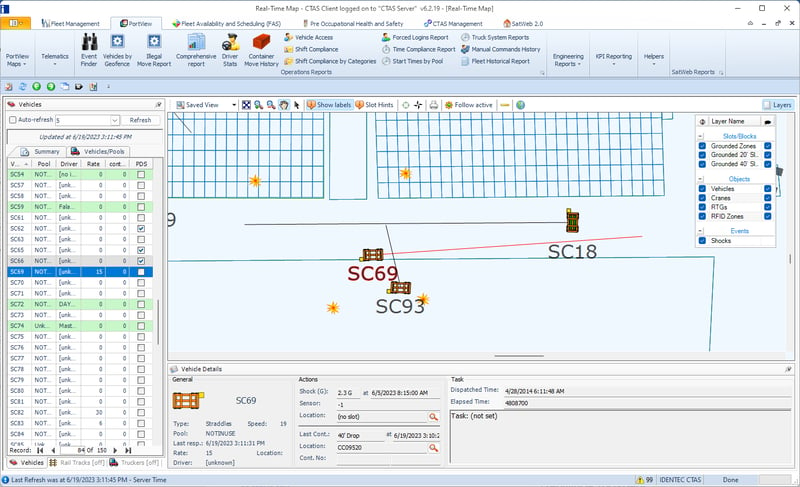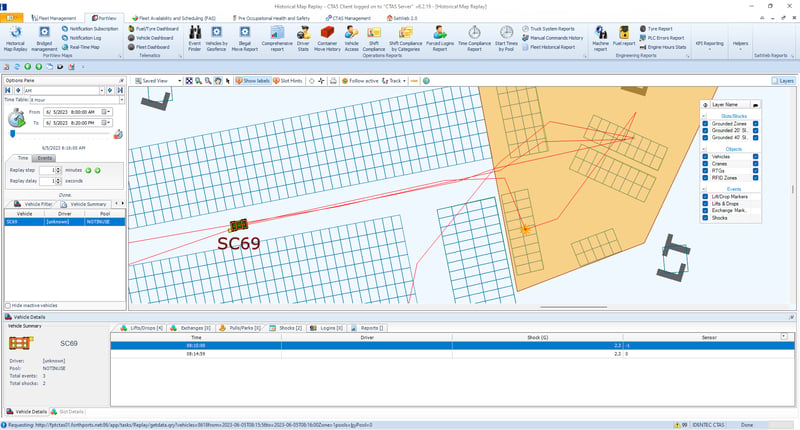Shock Management - Terminal Tracker Module
Real-time monitoring of shock events
Incorporating an IDENTEC SOLUTIONS-designed Shock Sensor on terminal vehicles allows the Shock Management module to report, alert and even shut down a vehicle when a significant shock event occurs.
The information is collated and processed to create convenient tasks and reports for the purpose of live and historical operations tracking, as well as productivity metrics across user-defined time ranges.
The Real-Time Map screen displays the most recent events in ‘real-time’ for selected vehicles, including their current position and a visual indication of their last shock event at the event location.
More about our new Shock Sensor VSM400 here...

Historical Map Replay
The Historical Map Replay is used to replay the movement of vehicles around the yard at an earlier time. For the Shock Management module, the Historical Map Replay task is a powerful tool to get a full Terminal view when investigating a damage event to a container or vehicle, allowing the user to efficiently identify the time and cause of damage (Learn more about damaged container in your yard and the consequences of unreported container damage.

Event Finder
The Event Finder window presents a multitude of search filters to isolate an event of interest more precisely. Shock or Shock Shutdown events can be easily found and presented in multiple ways, including grouped by drivers (where combined with the Operator Access) or vehicles to quickly identify trends in operations. The events found based on the search criteria and report filters can be exported for post-processing or trigger a jump to the Historical Map Replay to visualise the event.
Talk to an expert
Fill out the form below and one of our experts will be in touch. Alternatively, visit our contact page.
